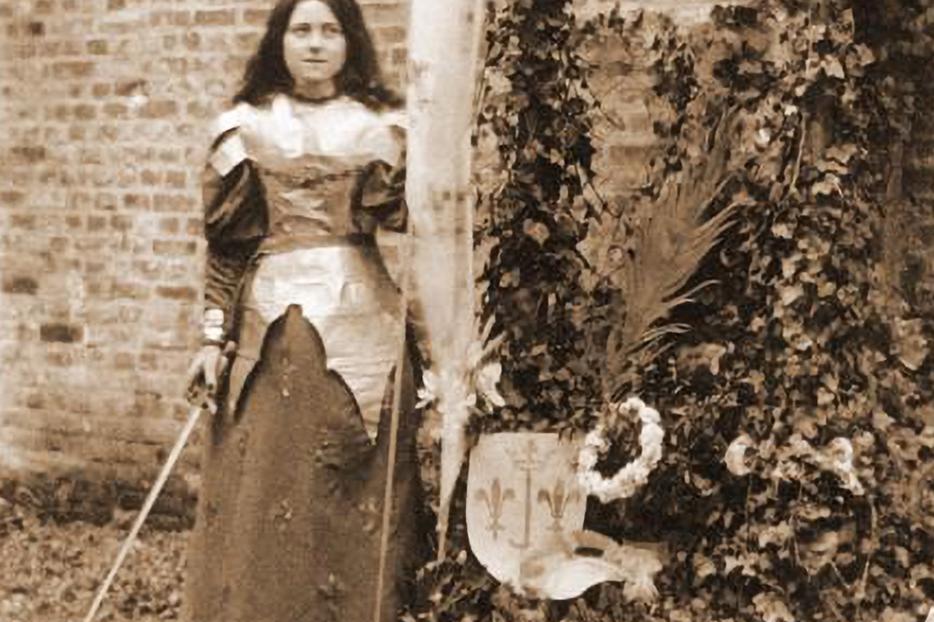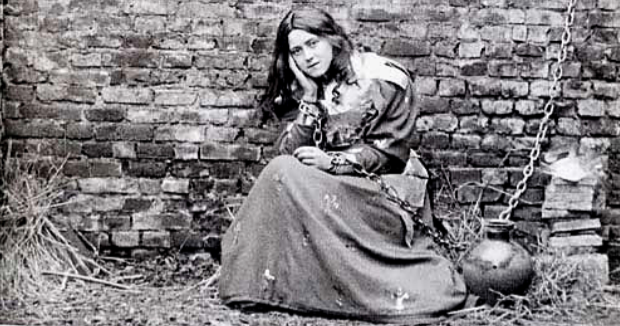Sainte Thérèse of Lisieux: The “Little Flower”
[Editors’ note: the following is excerpted from “WILDFlower: Untaming St. Thérèse of Lisieux,” a retreat WOC offered to members in October 2021, and facilitated by Nancy Corran and Jocelyn Sideco. The following text draws from many sources, linked below.]
“Jesus set before me the book of nature. I understand how all the flowers God had created are beautiful, how the splendor of the rose and the whiteness of the lily do not take away the perfume of the violet or the delightful simplicity of the daisy.
I understand that if every tiny flower wanted to be a rose, spring would lose its loveliness, and there would be no wild flowers to make the meadows gay. So it is in the world of souls, Jesus’ living garden.”
St. Thérèse saw herself as a “small wildflower, simple and hidden but blooming where God has planted her.” The “Little Way” describes her belief in the simplicity of doing ordinary things with extraordinary love. The smallest action, done with love, is more important than great things done for glory, power, or recognition.

She is also known as St Thérèse of the Child Jesus and the Holy Face. Her child-like faith is captured in the first name. In her writings, she expresses her devotion to Jesus’ face, in which she longed to hide, with the language of the mystics. Almost ironically, Jesus’ Little Flower is also known St Thérèse of the Roses because of her deathbed promise to shower roses from heaven.
Originally named Marie-Françoise-Thérèse Martin (born January 2, 1873, Alençon, France—died September 30, 1897, Lisieux), she was canonized May 17, 1925. Her feast day is October 1, the day after her death, the first day of her life in the heart of God. She was a Carmelite nun. Although her service to her Roman Catholic order was outwardly unremarkable, she was later canonized and named a Doctor of the Church (one of four women Doctors of the Church).
She was the youngest of nine children, although 4 of them had died before she was born. Thérèse was of frail health as a child. She went to live with a wet nurse, Rose, and Rose’s family in a nearby forest. At 15 months, she returned to her home, losing this first mother figure. However, her loving, affectionate family brought her warmly back into the fold. She soon became deeply attached to her mother, who would die when Thérèse was just 4 years old. It is well known that she was a particularly sensitive child, having intense emotional responses.
“Hysteria” was the word used for such outbursts. Then, at 8, her eldest, and favorite sister left home to join the Carmelite monastery. She had an affectionate relationship with her father, who called her his “little queen”, to whom all treasures belonged.” However, her sisters having joined the Carmelite Monastery, Thérèse was determined to join as well, as early as 15 years old, meeting with the local bishop.

She traveled to Rome, drinking deeply the beauty of the landscape on her travels. There, she witnessed a disappointing humanity and unholiness in priests. There, she also met with Pope Leo XIII, writing “the good pope is so old one would think he is dead.” To Pope Leo, she expressed her desire to join the Carmelites. “Go, go, you will enter if God wills it,” was his reply. One wonders if she dared to mention her call to priesthood at that time?
She was the youngest nun at the convent and often fell asleep during prayers.
Saint Thérèse had a clarion call to the priesthood, and she was not shy to write about it.
“I feel in me the vocation of the priest. With what love, O Jesus, I would carry You in my hands when, at my voice, You would come down from heaven. And with what love would I give You to souls! But alas! While desiring to be a Priest, I admire and envy the humility of St Francis of Assisi and I feel the vocation of imitating him in refusing the sublime dignity of the Priesthood.”
She writes as if she could have become a priest but for her Franciscan humility! She never mentions her gender as an issue, although she revered Joan of Arc, wrote a play about her, and acted her part.
“Love proves itself by deeds, so how am I to show my love? Great deeds are forbidden me. The only way I can prove my love is by scattering flowers and these flowers are every little sacrifice, every glance and word, and the doing of the least actions for love.”
The Story of a Soul is Thérèse’s life story and observations and tells of her relationship with God. Her sisters polished and edited her writings after her death and before publication. She died at the age of 24, the same month she would have been ordained a priest, a fact she herself noted. She came to understand her death as God’s way of saving her from the deep disappointment of not being able to fulfill her call.

In her earlier years in the monastery, she prayed that Jesus, her Beloved Spouse, would take her from her earthly life to be with him. However, she experienced a spiritual bleakness, plagued with serious doubts when actually facing death. Still, on her death bed she said,
” I will send down a shower of roses from the heavens; I will spend my heaven doing good upon earth.”
This movement from wildflowers to roses may reflect her belief that her ordination to priesthood would be consummated upon her death.
People have verified the presence of roses, scent of roses, when invoking her name or asking for her intercession.
REFLECTING ON SAINTE THÉRÈSE DE LISIEUX
- How does being a “Little Flower” and following the “Little Way” support your own
vocation/call? How does it challenge it? - How does reframing Thérèse from “little flower” to “wildflower” change your sense of Thérèse and/or your own sense of call?
“Then, overcome by joy, I cried, ‘Jesus, my love. At last I have found my vocation. My vocation is love. In the heart of the Church, my mother, I will be love, and then I will be all things.”
- When has there been tension between your deep desire and what was made available to you? How did you navigate it? Using language of the church, when a call has come to you from the other side of a “closed door”, how have you proceeded?
More resources:
- Prayers of St. Thérèse
- Poetry of St. Thérèse
- Story of a Soul
o Manuscripts A, B, and C, sources for Story of a Soul - Letters
- This video seminar with scholar Dr. Oliva Espín details Thérèse’s life, her writings,
her contemplative teaching and practices that help us go beyond her “Little Way.”
Click here - Or look to Dr. Oliva Espín’s book, Women, Sainthood, and Power, on Thérèse for more.

One Response
St Therese, pray for us.